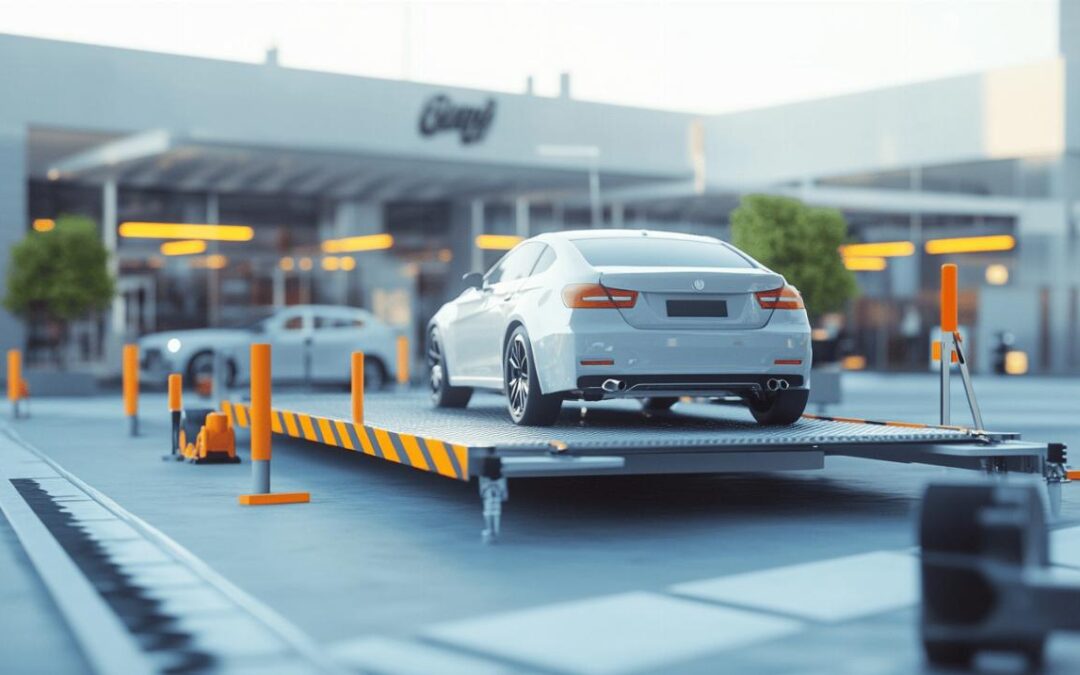Properly loading and transporting your vehicle requires careful planning and attention to detail to ensure both your safety and that of other road users. Whether you’re moving house, going on holiday, or transporting goods for work, understanding how to secure and distribute loads correctly can prevent accidents and damage to your vehicle. This comprehensive guide will help you transport items safely and legally.
Understanding weight limits and distribution
Checking your vehicle’s maximum load capacity
Before loading anything into your vehicle, it’s essential to know exactly how much weight it can safely carry. Every vehicle has a Maximum Authorised Mass (MAM), which you can find in your vehicle’s handbook. Exceeding this limit isn’t just dangerous—it’s illegal and can result in substantial penalties. The AA reports that in the UK, fines range from £100 for minor overloading to £300 and 3 penalty points for vehicles exceeding their weight limit by 15% or more. In severe cases involving overloading by more than 30%, you could face a court summons and potentially a 2-year prison sentence. You can visit https://www.auto-service-feser.de/ for professional advice on vehicle weight limitations and how they affect your specific car model.
Balancing cargo for optimal stability
Even if you’re within your vehicle’s weight limits, poor distribution can make your vehicle unstable and dangerous to drive. When loading your vehicle, place the heaviest items at the bottom of the boot, directly on the floor and as close to the centre as possible. This keeps your vehicle’s centre of gravity low, reducing the risk of rollovers during emergency manoeuvres. Ensure weight is spread evenly between the left and right sides of your vehicle to prevent pulling to one side when braking or accelerating. For particularly heavy loads, consider positioning them against the rear seats for additional stability and to prevent forward movement in case of sudden braking.
Securing your cargo properly
Essential tie-down tools and techniques
Unsecured items can become dangerous projectiles during sudden stops or accidents. According to transport safety data, objects falling from vehicles cause significant road closures each year, impacting both infrastructure and the economy. To prevent this, invest in quality cargo restraint equipment such as ratchet straps, bungee cords, cargo nets, and non-slip mats. When securing items, create a system of restraints that prevents movement in all directions—forward, backward, sideways, and upward. Cross-lashing techniques, where straps are arranged in an X pattern, provide excellent stability for larger items. For smaller objects, storage bins or boxes can help keep them contained and prevent shifting during transport.
Creating redundant security systems
Never rely on a single restraint method for important or heavy cargo. Safety experts recommend using at least two independent securing methods for critical items. For example, use both ratchet straps and rope, or combine a cargo net with individual tie-downs. This redundancy ensures that if one restraint fails, others will keep your cargo secure. Additionally, perform regular checks during your journey, especially after driving on rough roads or making sharp turns. Stop at safe locations to verify that straps haven’t loosened and loads haven’t shifted, as even small movements can compromise your carefully planned load distribution.
Tyre maintenance when carrying heavy loads
Adjusting tyre pressure for added weight
Your tyres bear the brunt of any additional weight you add to your vehicle, making proper inflation crucial for safe transport. When carrying heavy loads, consult your vehicle manual for the recommended tyre pressure adjustments. Generally, you’ll need to increase pressure slightly to accommodate the extra weight. Properly inflated tyres reduce the risk of blowouts, improve stability, and ensure better fuel efficiency even with the added burden. Remember that tyres at different pressures on the same axle can cause handling problems, so maintain uniform inflation across all tyres while adhering to the manufacturer’s specifications.
Signs of tyre strain to watch for
Be vigilant for warning signs that your tyres are struggling under the weight. Visual indicators include bulging sidewalls, excessive flattening at the contact patch, and uneven wear patterns. While driving, pay attention to how your vehicle handles—increased steering effort, pulling to one side, or vibrations could signal tyre issues. The sound of your tyres on the road can also provide clues; a hollow sound or unusual rumbling might indicate problems. If you notice any of these signs, reduce your speed, find a safe place to stop, and inspect your tyres and load distribution before continuing your journey.
Pre-journey safety checks
Creating a comprehensive inspection checklist
Before setting off, a thorough inspection can prevent problems on the road. Create a checklist that includes verifying all restraints are tight and secure, checking that your load hasn’t shifted during the securing process, and ensuring all vehicle doors, tailgates, and boot lids close properly. Examine your vehicle’s suspension to confirm it isn’t visibly sagging under the weight. Industry data suggests that approximately 25% of factory and warehouse accidents occur in or around loading areas, highlighting the importance of careful preparation. Double-check that all items are properly protected and cushioned to prevent damage to both your cargo and your vehicle’s interior.
Verifying visibility and access to controls
No matter how carefully packed your vehicle is, safety requires maintaining clear visibility and access to all controls. Ensure nothing obstructs your view through the windscreen, rear window, or side mirrors. In the UK, driving with blocked windows is not only dangerous but illegal. Make sure you can easily reach all controls, including indicators, lights, and the handbrake. If carrying passengers, verify they have adequate space and that safety features like seatbelts remain fully functional. Remember that emergency equipment such as warning triangles, first aid kits, and fire extinguishers should remain easily accessible in case of an incident.
Adapting your driving style
Braking earlier and maintaining safe distances
A heavily loaded vehicle requires significant adjustments to your driving technique. The most important change is allowing for increased stopping distances. Begin braking earlier and more gently than you normally would, as sudden braking can cause loads to shift or strain restraints. Maintain a greater following distance between you and the vehicle ahead—experts recommend at least a four-second gap in good conditions, doubled in wet or slippery conditions. This extra space gives you more time to react and brake safely if traffic ahead slows suddenly, compensating for your vehicle’s reduced responsiveness under load.
Navigating turns and roundabouts with extra weight
Extra weight affects your vehicle’s handling, particularly during turns and directional changes. Approach corners and roundabouts at lower speeds than usual, as a loaded vehicle has a higher centre of gravity and is more prone to rollovers during sharp turns. Take particular care on slip roads and motorway exits, where sudden lane changes combined with deceleration can destabilize an improperly loaded vehicle. Accelerate smoothly and progressively after turns to prevent weight transfer that could affect stability. Be especially cautious in crosswinds, as loaded vehicles—particularly those with roof cargo—are more susceptible to being pushed by strong gusts.
Height awareness and clearance considerations
Measuring your vehicle’s new dimensions
If you’re carrying items on a roof rack or your load extends above your vehicle’s normal height, knowing your exact dimensions becomes crucial. Use a tape measure to determine the highest point of your loaded vehicle and note this measurement where you can easily reference it while driving. Remember that UK regulations limit roof rack protrusions to 50cm from the sides or rear and 15cm over the front of your vehicle. For particularly tall loads, consider placing a note on your dashboard with your vehicle’s new height in both metres and feet to help you quickly assess clearance at bridges and other obstacles.
Planning routes to avoid low bridges and obstacles
With a taller-than-normal vehicle, route planning becomes essential. Use navigation apps or websites that allow you to specify vehicle height restrictions, helping you avoid low bridges, tunnels, and car parks with insufficient clearance. When possible, scout your route in advance or use street view functions to identify potential obstacles. Be particularly cautious in rural areas where tree canopies may be lower than expected and in older towns with archways or narrow streets. Remember that temporary obstacles like construction equipment or festival installations might not appear on maps, so maintain vigilance throughout your journey even on familiar routes.

